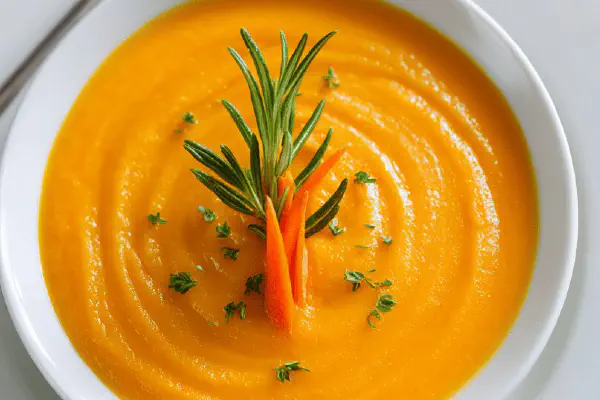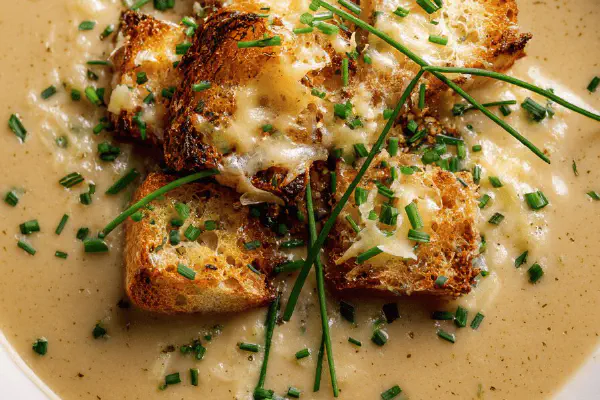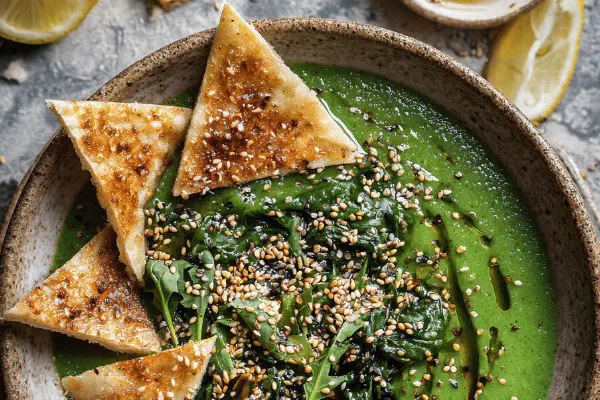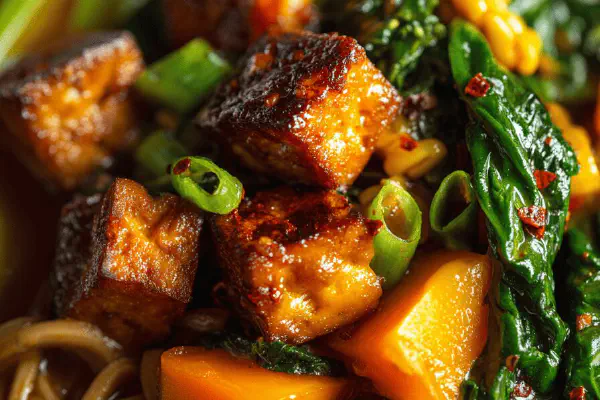Featured Recipe
Roasted Pumpkin Purée
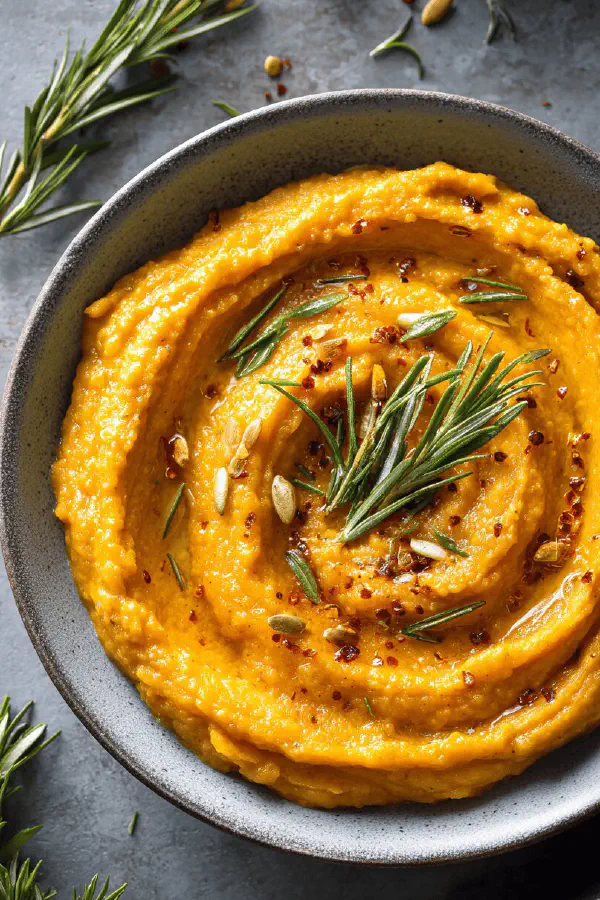
By Kate
"
Roast a small pumpkin, about 800 grams, until tender and caramelized. Scoop out the flesh and blend until creamy. Olive oil brings moisture and richness. Useful base for soups, pies, or savory bakes. Works well with spices or herbs added later. Gluten-free, vegan, nut and dairy free. Adjust roasting time by visual cues: flesh softens and skin browns unevenly. Use any firm pumpkin or winter squash. If fresh not available, canned purée can substitute but lacks roasted depth. Remove seeds dry and toast separately for garnish or snacks.
"
Prep:
12 min
Cook:
55 min
Total:
Serves:
2 cups
pumpkin
vegan
soup
cooking technique
Introduction
Pumpkin tucked in its skin traps steam and condensation, bringing out deep, roasted notes without drying out. That ember-like aroma when roasting signals sugars caramelizing in flesh, not just softening. Avoid cutting raw into chunks—it loses moisture and flavor. Roasting whole gives you that tender, slightly smoky edge. This method is not about speed but coaxing texture and flavor. When you hear the subtle pop and crackle, it means your pumpkin is doing that chemical magic. Once cool, the flesh feels like soft velvet but with body; good purée isn’t just smooth, it carries weight and moisture balance. Use olive oil here for its taste and silkiness, not just inert fat. Good purée is foundation, a blank slate; salting or spicing comes later depending on plate direction. No water added means natural sweetness stays pure, better texture retained. Storing and freezing tips to keep it fresh and flexible for any kitchen rhythm.
Ingredients
About the ingredients
Choosing pumpkin matters—go for firm, slightly heavy ones with bright orange skin. Sometimes labeled sugar or pie pumpkin. Avoid watery, fibrous types like big carving pumpkins or overly mature gourds. Substitute cooking oil with melted coconut oil or walnut oil for nutty undertones, but remember these alter final flavor. No oil? Butter or its vegan alternatives are viable but oil integrates better for pure vegan needs. Herbs and spices aren’t mandatory but thyme, sage, or cinnamon add depth. For sweet recipes, add cinnamon or nutmeg later, skip in savory. Seeds removed can be rinsed, dried thoroughly, salted and roasted separately for snack or garnish. Common mistake is overcooking: too soft means watery purée that lacks structure and tastes bland. Undercook? Flesh can be stringy and tough to purée smoothly.
Method
Technique Tips
Preheating oven stabilizes roast environment—don’t skip; uneven heat creates inconsistent caramelization. Scoring helps steam release; use tip of sharp knife to avoid deep punctures that dry flesh. Oil coats skin, assisting Maillard browning. Whole roasting protects from drying but you can halve first for quicker cook—watch closely then. Test doneness by gently squeezing: should yield under pressure not crumble. Remove seeds with spoon but don’t discard; toasted pumpkin seeds add textural surprise. Purée in pulses prevents overheating food processor blades and gummy texture. Purée will thicken as it cools; re-whisk before use for even consistency. Adjust seasoning after puréeing, not before—salt changes texture if mixed too early. Keep purée airtight to avoid oxidation and moisture loss; freeze in small portions to preserve freshness. Reheat gently to avoid drying out.
Chef's Notes
- 💡 Start with a firm pumpkin, about 800 grams. Look for bright orange. Heavier ones hold moisture. Avoid watery types. They mess up texture.
- 💡 Lower roasting temp helps caramelization. Bake whole pumpkin until it softens. Skin should brown unevenly. Popping sounds mean it's working. Stay alert.
- 💡 Don’t rush cooling. Cut when warm but not hot. Skin easy to scoop once cooled properly. Flesh should be tender, like velvet. Good texture adds flavor.
- 💡 When puréeing, pulse instead of running continuously. Avoid heat build-up. Gummy purée isn’t what you want. Preserve weight and moisture for better final dish.
- 💡 Taste for natural sweetness post-puréeing. Adjust seasoning after blending. Salt too soon can affect texture. Always store airtight to keep it fresh.
Kitchen Wisdom
What if my pumpkin is too soft?
If overcooked, purée loses structure. Try undercooking slightly next time for better texture. Test doneness by pressing.
Can I skip olive oil?
Yes, but results change. Use melted coconut oil for nutty touch or butter but work for vegan needs. Adjust flavor expectation.
What’s the best way to store purée?
Refrigerate in airtight container for up to three days. Freeze portions for future use. Thaw slowly, whisk before use.
How do I tell if it's done roasting?
Cracks in skin, flesh should yield to pressure. Trust those popping sounds. Watch for color change.
